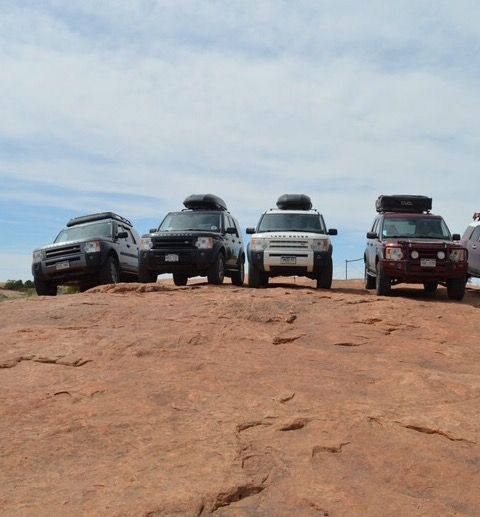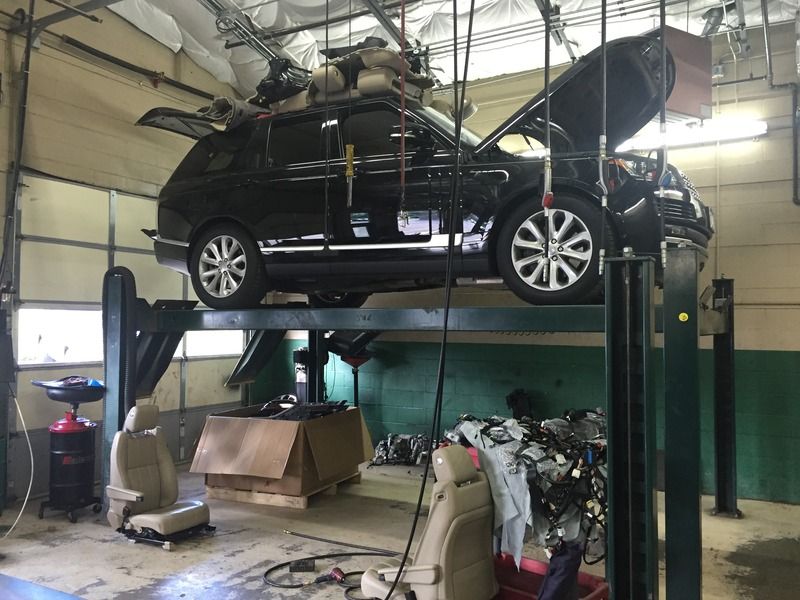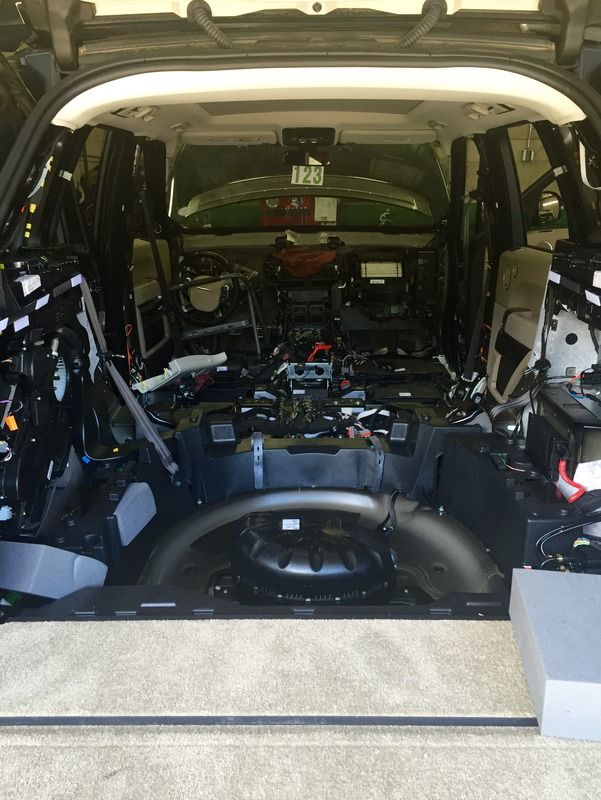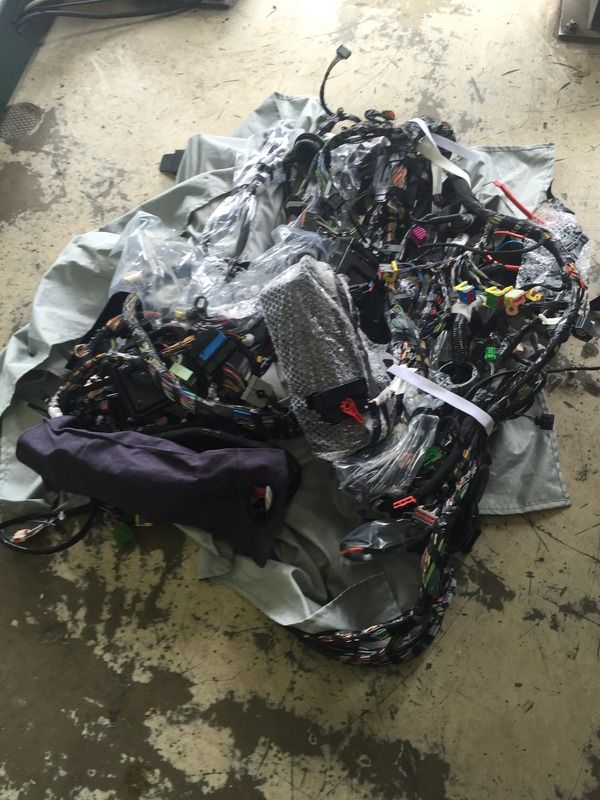You are using an out of date browser. It may not display this or other websites correctly.
You should upgrade or use an alternative browser.
You should upgrade or use an alternative browser.
discovery one dual battery set up.
- Thread starter VTlandrover
- Start date
jymmiejamz
Adventurer
Man why get combative in almost every thread you post in? All I see is negative. If he wants to do it, fine.
When I got into Land Rovers I didn't have anyone telling me all of the stupid **** I did to my vehicles was a bad idea. Maybe I did (been on Discoweb since I could drive in '04), but I just didn't listen. If you spend some time on any Land Rover Facebook groups you will really see how bad it is and maybe understand the general attitude I have.
I agree you loose the redundancy factor, but not that you still have the complexities. Dual Battery system complexity is, to me, the isolator, or isolating relays, and associated control/monitoring switches/lighting. The only added complexity in running two 6V batteries vs one 12V is the physical mounting, Running a Positive Lead across the truck and rerunning the ground cable to the Driver's side. Once completed, there seems like very little additional complexity to worry about. Anyway, said me peace, just providing another option to the OP..
I have a question for you about this because I can appreciate the increased capacity in a seemingly smaller package. How large are the 6V batteries? If the two 6V batteries are only slightly heavier than a group 31 battery I guess it could make sense. I'd still rather have one good battery and a micro jump box. I've always thought the appeal of having a dual battery setup was for the redundancy.
He's in NYC. He also knows a lot about Rovers, so there's that.
Don't forget, I'm from Va, not New York.
DiscoDavis
Explorer
When I got into Land Rovers I didn't have anyone telling me all of the stupid **** I did to my vehicles was a bad idea. Maybe I did (been on Discoweb since I could drive in '04), but I just didn't listen. If you spend some time on any Land Rover Facebook groups you will really see how bad it is and maybe understand the general attitude I have.
Don't forget, I'm from Va, not New York.
I can appreciate that. Where in VA?
LRNAD90
Adventurer
I have a question for you about this because I can appreciate the increased capacity in a seemingly smaller package. How large are the 6V batteries? If the two 6V batteries are only slightly heavier than a group 31 battery I guess it could make sense. I'd still rather have one good battery and a micro jump box. I've always thought the appeal of having a dual battery setup was for the redundancy.
Hey Jimmy,
Dimensions are 10.28" L x 7.06" W x 9.92" H (http://lifelinebatteries.com/products/marine-batteries/gpl-4ct/). An Odyssey PC2150 is 13.07" L x 6.91" W x 9.7" H. I don't have my '96 Discovery anymore, and never got to this modification, but it was my plan, and if I recall correctly, the fit was tight (they are tall batteries), but doable. They are 66 lbs each, but when it comes to battery, capacity generally comes at the price of weight, the more/denser the lead grid, the more capacity. A single Odyssey weight in at 78 lbs, the 6V Lifelines weigh in at 66 Lbs each (132 total), but the weight is distributed more evenly side to side.
But 492 Minutes of Reserve time vs 205 Minutes of Reserve time. So you get more than Double the Reserve time, for less than double the weight. And if you were to run two PC2150's, you'd be heavier, and still fall 82 minutes short on Reserve time vs the two 6V Lifelines..
Ray_G
Explorer
But 492 Minutes of Reserve time vs 205 Minutes of Reserve time. So you get more than Double the Reserve time, for less than double the weight. And if you were to run two PC2150's, you'd be heavier, and still fall 82 minutes short on Reserve time vs the two 6V Lifelines..
So this is me being a dumba$$, but I will put myself out there to futher the discussion: is this weight and complexity worth it for this capability? Ultimately this is an individual choice, but I view the battery setup first and foremost to get me started-and run ancillaries-but mostly to get the vehicle's charging system running. I know from time to time we may find ourselves with a dead truck AND the need to winch out (solo), over a long distance/difficult incline/etc and thus having such capacities would be nice but is this the average or even above average person's normal experience-to the point where they need to build the truck to do this?
I only raise that because there is a propensity to overbuild the crap out of these things-I'm guilty of it all the time-but sometimes less really is more. If I were building a truck to do solo exploration of AK I'd def consider this-but I'd also be seriously considering if I'd do it in a D1!
r-
Ray
LRNAD90
Adventurer
So this is me being a dumba$$, but I will put myself out there to futher the discussion: is this weight and complexity worth it for this capability? Ultimately this is an individual choice, but I view the battery setup first and foremost to get me started-and run ancillaries-but mostly to get the vehicle's charging system running. I know from time to time we may find ourselves with a dead truck AND the need to winch out (solo), over a long distance/difficult incline/etc and thus having such capacities would be nice but is this the average or even above average person's normal experience-to the point where they need to build the truck to do this?
I only raise that because there is a propensity to overbuild the crap out of these things-I'm guilty of it all the time-but sometimes less really is more. If I were building a truck to do solo exploration of AK I'd def consider this-but I'd also be seriously considering if I'd do it in a D1!
r-
Ray
I don't think its being a dumba$$, but the question is one that can only be answered by the individual doing the build (as you stated). This site is about Expeditionary travel, not weekend trail riding. Personally I don't think the physical mounting and cabling adds that much complexity. Your (and other's) opinion may vary. For someone doing Vehicle Dependent Travel, Large Capacity Electrical systems are usually a priority. Many may still prioritize isolated battery systems, over the relative simplicity of this options large capacity. Many may feel a stock battery and a jump pack are sufficient. I am simply providing another option to consider.
P.S. - Enjoyed reading your Build Thread, makes me miss my old '96 5-speed Disco..
Last edited:
ColoDisco
Explorer
We can compare experience in building vehicles and me being a experienced tech supporting MORE than just my vehicle. Example #1: my Land Rover friends in Moab last April:Makes about as much sense as carrying two spare LR3 water pumps.

That is only 3 of 4 other LR3's I help support.
Example #2:
Complete body harness in a 2016 Range Rover I (and I alone)replaced last June:



Built my 95 discovery into a self reliant expedition rig and my 98 discovery adding a 4.6 engine with a dual battery system. Feel free to surf my Photobucket for more examples of work I have done.
I don't know what your issue is with me specifically and quite frankly am tired of defending my reasoning for my modifications. Electrical is always a concern. Planning on a trip through Baja next Christmas with at least one other LR3 and always plan to support any rig that is with me. Even if it is overkill, I would rather have self recovery from the desert of Baja than have to hike for help. That has always been my intention: SELF reliance.
I will add, this forum should be about helping fellow Land Rover owners meet their ultimate goal of building and repairing their vehicles. Not judging how they go about it or what their decisions might be. Everyone has their reasons and rather than try and change everyone's mind, try helping instead.
Back to the topic at hand.
Last edited:
VTlandrover
Adventurer
i have been driving land rovers for a long time, i have never before installed a dual battery system, im kind of surprised by some of the responses on here, my rover is built ...but not overbuilt, if i have to explain my thought process so be it! i have a rtt annex etc, i like to explore primitive out of the way locations, i also have have a 40 quart waeco fridge ,two young children, a micro start jump pack. my reason for installing it is a simple reason, its called piece of mind!! thanks to all the folks who have helped out with photos and explanations, i do not have a snorkal seems like if i did only the mantec would work. where is a good place to mount the controller? i dont need to constantly look at it but it does need to be accessible!
LRNAD90 has some good points. First thanks for the link to the Lifeline batteries. I know this discussion is under a Discovery I but let's extend this to more recent vehicles since readers will do the same. the DI requires less capacity as it has less electronics. The LR3/4 has much greater demands. I suspect the D5 will have even higher demands. Back to the DI, many add stuff that increases demand and lowers time to depleted battery. Frig, lights, ham radio, ..... the list can grow.
RVers deal with this all the time. Review Earrthroamer demands and you will be surprised. The rational for two 6V Lifelines is easy to arrive at. In fact I don't think you can find a "big enough" 12V to match two 6Vs. And it isn't really any more difficult to install.
RVers deal with this all the time. Review Earrthroamer demands and you will be surprised. The rational for two 6V Lifelines is easy to arrive at. In fact I don't think you can find a "big enough" 12V to match two 6Vs. And it isn't really any more difficult to install.
chris snell
Member
i have been driving land rovers for a long time, i have never before installed a dual battery system, im kind of surprised by some of the responses on here, my rover is built ...but not overbuilt, if i have to explain my thought process so be it! i have a rtt annex etc, i like to explore primitive out of the way locations, i also have have a 40 quart waeco fridge ,two young children, a micro start jump pack. my reason for installing it is a simple reason, its called piece of mind!! thanks to all the folks who have helped out with photos and explanations, i do not have a snorkal seems like if i did only the mantec would work. where is a good place to mount the controller? i dont need to constantly look at it but it does need to be accessible!
You've got to be kidding me. You want two 6V batteries for peace of mind? You do realize that with two batteries, you are twice as likely to suffer a battery failure on the trail and that losing any one of your two batteries means that you can't start your truck and you can't operate a 2-way radio, right?
I have taken single high-quality Group 31 Odyssey batteries on 35,000 miles of off-pavement trips over the last ten years and they've never once let me down. I've parked the truck for two days in the heat with the Engel on and it still started. I've had these batteries at -15F for days on end, in the depths of a cold Northern Idaho winter and they still heated my glow plugs and turned my cold-soaked diesel motor over in the morning, no problemo. I'll put my single battery up against your twin 6V systems any day.

VTlandrover
Adventurer
You've got to be kidding me. You want two 6V batteries for peace of mind? You do realize that with two batteries, you are twice as likely to suffer a battery failure on the trail and that losing any one of your two batteries means that you can't start your truck and you can't operate a 2-way radio, right?
I have taken single high-quality Group 31 Odyssey batteries on 35,000 miles of off-pavement trips over the last ten years and they've never once let me down. I've parked the truck for two days in the heat with the Engel on and it still started. I've had these batteries at -15F for days on end, in the depths of a cold Northern Idaho winter and they still heated my glow plugs and turned my cold-soaked diesel motor over in the morning, no problemo. I'll put my single battery up against your twin 6V systems any day.

Chris.... I'm not putting twin 6v batteries in.. someone hijacked my post suggesting it was better!
Sent from my iPhone using Tapatalk
ĹOL. Chris was probably talking to me. Agreed two components CAN be less reliable than one. But not always true. The question on the table is can I get equivalent reliability AND increased reserve capacity? Probably.
Review the following.
http://lifelinebatteries.com/knowledge-center/compare-battery-types/
Usual disclaimers ...... other than a reliability engr in a previous life.
Review the following.
http://lifelinebatteries.com/knowledge-center/compare-battery-types/
Usual disclaimers ...... other than a reliability engr in a previous life.
jymmiejamz
Adventurer
We can compare experience in building vehicles and me being a experienced tech supporting MORE than just my vehicle. Example #1: my Land Rover friends in Moab last April:

That is only 3 of 4 other LR3's I help support.
Example #2:
Complete body harness in a 2016 Range Rover I (and I alone)replaced last June:



Built my 95 discovery into a self reliant expedition rig and my 98 discovery adding a 4.6 engine with a dual battery system. Feel free to surf my Photobucket for more examples of work I have done.
I don't know what your issue is with me specifically and quite frankly am tired of defending my reasoning for my modifications. Electrical is always a concern. Planning on a trip through Baja next Christmas with at least one other LR3 and always plan to support any rig that is with me. Even if it is overkill, I would rather have self recovery from the desert of Baja than have to hike for help. That has always been my intention: SELF reliance.
I will add, this forum should be about helping fellow Land Rover owners meet their ultimate goal of building and repairing their vehicles. Not judging how they go about it or what their decisions might be. Everyone has their reasons and rather than try and change everyone's mind, try helping instead.
Back to the topic at hand.
I'd be happy to compare 'experience' if you like, but that sounds like a ******** measuring contest to me. While replacing a body harness is no small task, it doesn't actually involve any real skill. That is a job we typically give to our hourly techs. Anyone can replace components. It is understanding why they are being replaced that really matters.
I think the easiest way to determine your skill level is with a simple quiz. My manager does something similar when hiring technicians who claim to be A level technicians.
Looking at this wiring diagram for the high speed CAN bus on a 2011 L322 RR, what would be a good connector to split the harness to check the resistance of the HS CAN network? What do you think the resistance would be of the network split and complete? Lastly, what voltages would you expect to see at pins 6 and 14 of the diagnostic connector with the vehicle running? Here is a screen shot of the diagram. Probably easier to view on Topix.
If you don't know, you can ask your shop foreman tomorrow.

LRNAD90
Adventurer
You've got to be kidding me. You want two 6V batteries for peace of mind? You do realize that with two batteries, you are twice as likely to suffer a battery failure on the trail and that losing any one of your two batteries means that you can't start your truck and you can't operate a 2-way radio, right?
I have taken single high-quality Group 31 Odyssey batteries on 35,000 miles of off-pavement trips over the last ten years and they've never once let me down. I've parked the truck for two days in the heat with the Engel on and it still started. I've had these batteries at -15F for days on end, in the depths of a cold Northern Idaho winter and they still heated my glow plugs and turned my cold-soaked diesel motor over in the morning, no problemo. I'll put my single battery up against your twin 6V systems any day.
Overland Journal, are you listening? Sounds like the makings of a good article..
ColoDisco
Explorer
I'd be happy to compare 'experience' if you like, but that sounds like a ******** measuring contest to me. While replacing a body harness is no small task, it doesn't actually involve any real skill. That is a job we typically give to our hourly techs. Anyone can replace components. It is understanding why they are being replaced that really matters.
I think the easiest way to determine your skill level is with a simple quiz. My manager does something similar when hiring technicians who claim to be A level technicians.
Looking at this wiring diagram for the high speed CAN bus on a 2011 L322 RR, what would be a good connector to split the harness to check the resistance of the HS CAN network? What do you think the resistance would be of the network split and complete? Lastly, what voltages would you expect to see at pins 6 and 14 of the diagnostic connector with the vehicle running? Here is a screen shot of the diagram. Probably easier to view on Topix.
If you don't know, you can ask your shop foreman tomorrow.

When I have a couple min I will answer your question. At the moment I'm working. How about we take this conversation off this guys thread.
No access to topix (left dealer as I was not making any real money) and your image is too low res for me to make out the connector numbers. I can look it up in all data when I have time.
Last edited:
Similar threads
- Replies
- 3
- Views
- 637
- Replies
- 1
- Views
- 923
- Replies
- 0
- Views
- 541
